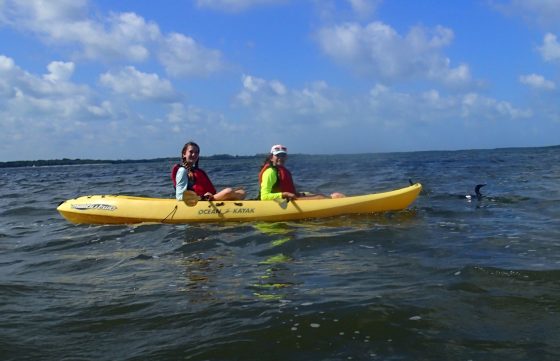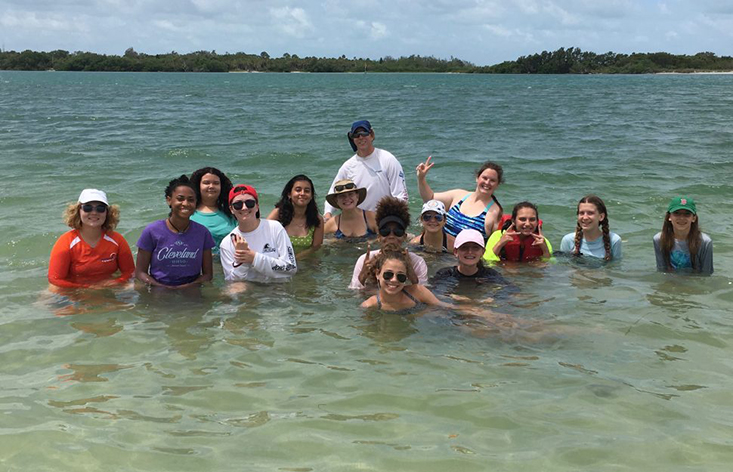Written by: Kyle Amergian
It was a great morning at OCG. I arrived early and happily worked away preparing the equipment that we’d use today on our kayaking adventure to Shell Key. Peer Counselors Savannah and Sterling assisted with gathering the life jackets, verifying they had whistles, kayak paddles, and kayak seats. After we had 100% accountability, we loaded all the equipment into the truck along with two coolers full of snacks and a 5-gallon jug of water. Right around that time the Campers arrived from USFSP and walked cheerfully into Clam Bayou for a quick class on shell identification.
Soon enough and with a trailer of kayaks in tow, we departed the Clam en-route to the put-in point near Tierra Verde Marina. This location allowed us a straight shot across the bay and onto shell key. The total one-way paddle distance for this trip was just over 1.2 miles. When we arrived at the site the girls were all excited and in high spirits. While the wind was howling in from the southwest at around 14 miles per hour, all the kayaks made fairly easy work of the trip. The canoe however, was a different story. That boat sits much higher out of the water, is laden with equipment and coolers, and only has one paddler. But, where there is a Ryan, there is a way. And so, water, lunch, and shell information were delivered despite the winds by simply tying the canoe to my waist and walking across the shallow bay (using the paddle as a stingray protective device, of course).
Once we were on the key, we saw a myriad of interesting sights. We found two sea turtle nesting sites. We also got to observe two adult dolphins hunting fish, literally ten feet away from where we were walking. The proximity is due largely to the sharp drop-off on the west side of the key which allows the charismatic megafauna to get so close to the shore. We also found really interesting gastropods and bivalves! Although, I think my favorite find of the day was a fully intact and fully bleached sand dollar. I’ve never seen one so large just tumbling in the waves with ZERO chips or cracks. I was really hoping to find some whelk egg cases but we didn’t see any today. Another great discussion point was a dead Osprey on the sand. We spent a few minutes just thinking about the kind of natural causes that could make a bird like that simply die on the beach. Lots of theories were thrown around but in the end we decided it must have been a case of drowning after attempting to lift out too big of a fish.

We made our way back for a quick lunch before an impending rain squall urged us back home. We embarked on our kayaks and canoes and headed for home just as the wind was really picking up. IN fact I checked later and the winds hit almost 21 knots or 24 miles per hour on our paddle home. While the rain was cooling and refreshing, the wind made paddling difficult and several of us actually capsized as we made our way back to the mainland. It was really great overcoming a little adversity, and I’m sure that trip will be one the girls always remember. It was also amazing to see the counselors working so closely with the girls, encouraging them to push themselves beyond their comfort zones and embrace their time in and on the water. Based on the rowing capabilities of our group we actually split up into three smaller groups, each with a mentor. The lead group paddled straight across the bay and arrived first at the put-in point. The second group struggled a little but arrived shortly after. The third group took a different approach and used the towing capabilities of the Eckerd SAR to bring them into Fort Desoto Boat Ramp. But in the end, we all arrived back home safe and sound and with a great story to tell!
